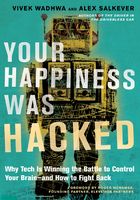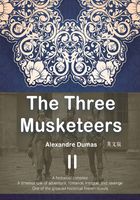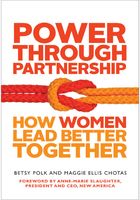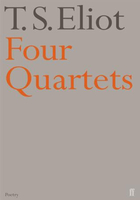Towards Zion
The programme of the Basle Congress, the idea of a determined effort to secure a Jewish homeland, caught the imagination of vast numbers of Jews throughout the world, but especially in Eastern Europe and Russia, where life under the rule of Christian sovereigns was fraught with problems. Herzl understood that a diplomatic initiative, negotiations, and an impressive programme were not enough. 'The foundation of a State', he wrote in his diary on 3 September 1897, 'lies in the will of a people for a State.'
Zionism, with its call for a Jewish revival in Palestine, made an immediate impact on Russian Jewry. But many Russian Jews were attracted to a quite different cause, that of revolutionary socialism. Not an escape from Tsarist tyranny to some distant land, but the destruction of Tsarism itself, was their ideal. On 7 October 1897, only five and a half weeks after the much publicized opening of the First Zionist Congress in Basle, a secret convention opened in Vilna of a new Jewish organization, the Bund—the Jewish Socialist Workers' Party—dedicated to the coming of a Russian socialist government. In March 1898 the Bund was formally admitted to the Russian Social Democratic Labour Party, as an autonomous body, and was to play a major part in the emergence of Russian revolutionary socialism. The Bund quickly became a mass movement, attracting many Jews by its demand for equal political and civil rights for Russian Jews, though Leon Trotsky, one of the leaders of revolutionary socialism in Russia (and a Jew) belittled the Bundist as 'Zionists who are afraid to become seasick'.
Henceforth the Zionists had to meet the challenge of the Bundists, whose appeal to a persecuted people was, like theirs, a strong one. Zionism was never a unanimous, or even a majority, movement among the Jews of Russia, the Jewish heartland; it made even less impact on the Jews of the United States, which was rapidly emerging as the second great centre of Jewish life. But Herzl was determined to make it work. When the Second Zionist Congress opened on 28 August 1898, again at Basle, the number of delegates had more than doubled.
Amid the enthusiasm of the Second Congress, and the realization that the Zionist movement was gaining in size and respectability, little attention was paid to a report from one of the delegates, Leo Motzkin, who had just returned from Palestine. In his speech he stressed the 'established fact that the most fertile parts of our land are occupied by Arabs'. He even gave the figure of 650,000 for the number of Arabs, and warned of 'innumerable clashes between Jews and incited Arabs' that had taken place there. In his closing speech, Herzl made no reference to these uncomfortable, ominous facts.
Among those present at the Second Zionist Congress was a twenty-three-year-old Russian Jew, Chaim Weizmann, who had been studying chemistry at a Swiss university only 50 miles from Basle. That September he returned to Pinsk. He was not impressed by the state of Zionism there, writing to some friends, 'Propaganda is not yet being conducted as it should. A great shortage of speakers is felt. One ought to take advantage of these fiery times.' The Russian-Jewish world was indeed in ferment, with many Jews, especially students, turning not to the ideals of Zionism but to those of socialism and even revolution as the answer to discrimination and poverty.
A sense of impending success had seized Herzl's imagination. Visiting London, he told the 10,000 Jews who gathered to hear him speak in the East End on 3 October 1898, 'I fervently believe the time is very close when the Jewish people will very definitely be on the march.' Later that month Herzl left Vienna for the east, visiting Constantinople again, and making his first visit to Palestine. He timed his visit to coincide with that of the German Kaiser, William II. When the two men met by the roadside at the entrance to Mikveh Israel, the Kaiser commented that water was the key to building up the land. This, although true, was hardly the commitment of support for which Herzl had been looking.
On November 2, in Jerusalem, the Kaiser received a Jewish deputation including Herzl. The deputation presented the German monarch with an album of photographs of the existing Jewish settlements in Palestine. As a result of his two audiences with the Kaiser, Herzl felt that the World Zionist Organization, of which he was President, had been accorded serious recognition, giving Jewish national aspirations a status inconceivable a decade earlier. But while the Kaiser had expressed interest in the Jewish agricultural experiments in Palestine, he remarked in his talk with Herzl on November 2 that these experiments must be conducted 'in a spirit of absolute respect for the Sultan's sovereignty'.
The First and Second Zionist Congresses both advocated the establishment of a bank through which money could be directed to Palestine. It was incorporated in London on 20 March 1899 as the Jewish Colonial Trust (Juedische Colonialbank). The aims of the bank were set out in its statutes. The first was 'to promote, develop, work and carry on industries, undertakings and colonization schemes… in particular of persons of the Jewish race into Palestine, Syria and other countries in the East'. Another aim was 'to acquire from any State or other authority in any part of the world any concessions, grants, decrees, rights and privileges whatsoever' for the employment of capital in Palestine, with a view 'to prospect, examine, explore, test and develop any mining, landed, agricultural and other properties, and to despatch and employ expeditions, agents and others'.
It was to take more than three years before the share capital was sufficiently subscribed by Jews all over the world for the bank to begin operation. To ensure the maintenance of political control, founder shares were held by the World Zionist Organization. Herzl headed the list of the bank's council members, who included Zionist luminaries from New York, Paris, Warsaw, Kiev, Moscow, Cologne and Sofia.
Herzl's efforts to alert European Jewry to the need for nationhood, and to the precarious nature of Jewish acceptance in otherwise civilized societies, were helped in 1899 by the publication of The Foundations of the Nineteenth Century by Houston Stewart Chamberlain. Born in Britain, Chamberlain had chosen to live in Germany where he married Richard Wagner's daughter. In his book he developed the theory of the 'blond' Nordic race, the originators of all that was noble in Western civilization. All that was bad, Chamberlain asserted, came from racial mixing, and particularly from any 'Nordic' intermarriages with Jews. The Jews, he wrote, were a 'mongrel' people incapable of creativity; they were the universal corruptors. According to Chamberlain's so-called researches, not only King David and the biblical Prophets, but also Jesus, were not Jews at all but of ancient Germanic origin.
Houston Stewart Chamberlain's ideas won acclaim in Germany. The Kaiser was one of his supporters. His book was later to influence the most vicious anti-Semite of all, Adolf Hitler, with whom Houston Chamberlain developed a personal friendship. In the same year that The Foundations of the Nineteenth Century was published, a book was published in Cairo entitled The Talmud Jew. Its author, August Rohlings, likewise portrayed the Jew as a disruptive force in world history. Both books gave existing prejudices a false intellectual legitimacy, cloaking evil in spurious science.
For anti-Semites like Houston Stewart Chamberlain and August Rohlings, it was not only the wealth of the Rothschilds, but the cohesion of the Jews—who had often banded together in self-defence groups to ward off the attacks of pogroms in Russia—that gave proof of a worldwide Jewish 'conspiracy' which had to be crushed. For the Jews themselves, cohesion seemed their only chance of physical as well as spiritual survival. Zionism offered a cohesion that would lead to a national reality. In 1901 a Jew living in London, Ezekiel Wortsmann, wrote a pamphlet entitled What Do the Zionists Want?, in which he explained: 'We consider ourselves as strangers everywhere, even where we have been given complete civil rights, because we want to have a home of our own.' Wortsmann also argued that it was not enough to 'revive a people' in Palestine; it was also essential to 'revive its national tongue', the Hebrew language.
In Palestine itself, Hebrew was becoming more and more accepted each year as the common spoken language among the Jews. Eliezer Ben-Yehuda continued to compile a Hebrew-language dictionary which would both incorporate new words and enable the biblical language to be of use in the exigencies of modern life.
***
The Jews were a minority in Palestine at the turn of the century. But they formed compact and active communities, struggling, experimenting and growing. Despite the dull hand of Turkish bureaucracy, they lived their daily life with a sense of dignity and independence. Jews who arrived to join them were welcomed as if returning home.
On 29 December 1901 the Fifth Zionist Congress, meeting in Basle, set up a special fund, the Jewish National Fund, to buy land in Palestine. The Hebrew name, Keren Kayemet Le'Yisrael, came from a Talmudic dictum about good deeds, 'the fruits of which a man enjoys in this world, while the capital abides [ha'keren kayemet] for him in the world to come'. The money for the fund was to be collected from Jews in the Diaspora. 'The Jewish National Fund shall be the eternal possession of the Jewish people,' the Congress declared. 'Its funds shall not be used except for the purchase of lands in Palestine and Syria.' Palestine was then an integral part of Syria; some of the lands purchased in the coming few years were on the high ground just to the west of Damascus, known today as the Golan Heights.
The work of the Jewish National Fund was carried out by patient fund-raising throughout the Diaspora. It was particularly effective in Britain, Germany, the Austro-Hungarian Empire and the United States. Administered from Vienna, its central fund-raising symbol and practical means was the Blue Box, a small blue tin collecting box, placed in shops, offices, synagogue halls and private homes. It was from both wealthy Jews and from the small donations of hundreds of thousands of far from wealthy Jews, including many children, that the money for land purchase was to be raised. The fund also had a Golden Book in which the names of the larger donors were inscribed. Within three years of the fund being set up, enough money had been collected for the first land purchase—Kfar Hittim (Grain Village) in Galilee. The first settlers there were Jewish immigrants from the city of Lodz, in Russian Poland.
***
For the Jews of Russia, one cruel form of discrimination was the exclusion of Jewish children and students from the full rights of education. This exclusion spurred the development of a central feature of Zionism: the encouragement of educational opportunities. Herzl and the Zionists wanted Jews to be as free as anyone else to develop their own creative skills. On 8 June 1901, however, the Tsarist Ministry of Education directed that the existing 10 per cent quota for Jewish university students should not be calculated for the overall student body, but separately for each faculty. This greatly reduced the number of Jews in those faculties, like Law and Medicine, which Jewish students favoured.
In order to free Jewish education from its dependence upon hostile governments, the Zionists put forward the idea of a Jewish university in Palestine. Hermann Schapira, who had raised the idea in 1884 only to have it dismissed, and had then brought it to the First Zionist Congress in vain, continued to press for it and was supported by one of the younger Congress delegates, Chaim Weizmann. More than a thousand years earlier the academies of Sura and Pumbeditha had been the last fully autonomous Jewish intellectual centres. Yet even they had been subject to Mesopotamian over-lordship. Since then, in Europe, North Africa and Asia every Jewish place of learning was at the mercy of local laws, often hostile to Jewish learning, while the numerical restriction of Jewish students in almost all places of learning effectively denied a higher education to many Jews who wished to pursue their studies.
As the restrictions on Jewish education in Russia grew more severe, the desire for specifically Jewish studies, whether religious, historical or literary, gave added power to the idea of an autonomous Jewish university in Palestine. On 3 May 1902 Herzl himself set out some of the arguments and some of the appeal of such a university in a letter to the Turkish Sultan, Abdul Hamid, to whom he wrote, 'The Jewish University should bring together all the scholarly qualities of the best universities, technical schools and schools of agriculture. The institution will offer nothing unless it is of the very first rank. Only then can it render real service to scholarship, to the students, and to the country.'
The idea of a Jewish university, and all that such a university implied, quickly became an integral part of Zionist thinking. During a conference of Russian Zionists which opened in Minsk on 4 September 1902, Ahad Ha'Am stressed the links between Zionism as a movement for national revival, and the cultural needs of the Jewish people. Both, he believed, could be given a new focus in Palestine. Among the resolutions which were passed in Minsk was one which expressed the sympathy of the conference with the idea of a Jewish university. At a Zionist conference held in Vienna at the end of October 1902, Chaim Weizmann joined with twenty-four-year-old Martin Buber in a motion aimed at facilitating 'a Jewish university in Palestine'. The mood of the conference was such that the phrase 'only in Palestine' was insisted upon, following which Weizmann was appointed head of a small office in Geneva devoted to the task of advancing the university project.
***
Even as the Zionist movement was putting the idea of a Jewish university in Palestine at the forefront of its programme, Herzl was answering the questions of those who did not see why Palestine should be the destination of tens, or even hundreds of thousands of Jews. On 7 July 1902, while in London, he was asked about the settlement of Russian Jews in lands other than Palestine when he gave evidence to the Royal Commission on Alien Immigration. Why not continue to send the Jews to Argentina? Herzl was asked. After all, the great Jewish philanthropist, Baron de Hirsch, had provided substantial financial support for Jewish colonies across the Atlantic. That plan, Herzl replied, had been a failure 'because when you want a great settlement, you must have a flag and an idea. You cannot make those things only with money.'
Herzl then expressed the essence of Zionism when he told the Commissioners, 'With money you cannot make a general movement of a great mass of people. You must give them an ideal. You must put into them the belief in their future, and then you will be able to take out of them the devotion to the hardest labour imaginable.' He gave them Argentina as an example. 'Argentina has a very good soil,' he said, 'and the conditions for agricultural labour are much better than in Palestine, but in Palestine they work with enthusiasm and they succeed. I am not speaking of the artificially made colonies, but self-helping colonies, which have that great national idea.'
The Lovers of Zion were also looking for the means to secure land settlement in Palestine in more than a piecemeal way. In 1902 the Odessa Committee of the Lovers of Zion sent Ahad Ha'Am and the Russian-Jewish agronomist Jacob (Akiva) Ettinger to Palestine, to report on the state of the Jewish settlements there and on how they could be improved and expanded. Herzl, meanwhile, continued his diplomatic efforts to secure the Jews a legal place in Palestine. The Kishinev pogrom in 1903, in which more than fifty Russian Jews were killed by a mob rampaging through the town on Easter Sunday, seemed to give urgency to his efforts. A plan to settle the Jews at El Arish on the Mediterranean coast of the Sinai Desert so excited him that he decided against buying a family burial vault in the Vienna Jewish cemetery. In May the British-controlled Government of Egypt rejected the plan on the grounds that five times as much water would be needed for a Jewish settlement there as was available. Five days later Herzl bought the cemetery plot in Vienna after all. Four days after that, the British Colonial Secretary, Joseph Chamberlain, offered Herzl a Jewish homeland in Africa. To the outrage of those Zionists for whom Palestine was the one and only objective of all their efforts, Herzl accepted. He was determined to take up the first offer presented to the Jews by a Great Power, and to provide at least a place of temporary asylum for the Jews of Russia. In accepting, he split the Zionist movement. It was the first but not the last crisis in which the road already travelled seemed at risk.
The British offered Herzl a territory in Uganda, to be under the sovereignty of the British crown, into which a million Jews could immigrate and settle. The territory would be administered by the Jews and have a Jewish governor. When Nordau protested that Uganda was not Palestine, Herzl replied that, like Moses, he was leading the people to their goal via an apparent detour.
The Sixth Zionist Congress was soon to meet. Travelling to St Petersburg in August 1903, to show the Jews of Russia that he had not abandoned them, Herzl secured to their applause an end to the ban on Zionist organizations and fund-raising. Returning to Vienna through Vilna, he was greeted by a vast, admiring mass; so great was the throng at the railway station that gathered to see him off at the end of his visit that they were beaten back by the Tsarist police with considerable brutality.
The Sixth Congress was held in Basle. The idea of Uganda instead of Palestine, even as a temporary place of refuge, led to stormy arguments. The delegates from Kishinev were particularly vehement against any destination other than Palestine. Herzl worked busily behind the scenes to win over Nordau and to secure a majority. He succeeded: 295 for the Uganda scheme, 175 against, and 99 abstentions. Among those watching the proceedings from the gallery was Leon Trotsky who had chosen a very different path to salvation and who forecast the collapse of the Zionist movement.
The Zionist movement was certainly split. In Paris a Russian-Jewish student fired two pistol shots at Max Nordau with the words: 'Death to Nordau, the East African.' This was not the last time that a Jewish fanatic was to fire at a fellow Jew. Herzl continued on his travels in search of some form of land charter for Palestine, which remained his ultimate goal. Visiting Rome in January 1904, he was received by the Pope who said that if the Jews did settle in Palestine, the Catholic Church would be glad to convert them.
In April, at an emergency Zionist meeting in Vienna, Menachem Ussishkin—who in 1891 had astonished even his fellow Lovers of Zion by taking his bride to Palestine for their honeymoon—spoke with passion against Uganda. But Herzl refused to accept that Palestine alone must be the Zionist goal, and a state of 'armed peace' was declared.
Then, in July, at the early age of forty-four, Herzl died. He had been worn out by his frenetic, fevered, disputed labours and endless travels. 'Cut down in the flower of manhood,' the Jewish Chronicle wrote, 'and after efforts all too brief, he leaves the bulk of his people still in bondage and with the gates of their home relentlessly barred against them.'
The Uganda scheme was finished; Herzl's death effectively killed it, and even the British government had lost its enthusiasm. Inspired by the ideal of redeeming the Land of Israel through toil, a second wave of immigration—the Second Aliyah—began in 1904 and continued until the outbreak of the First World War. Mostly from Russia, Roumania and Eastern Europe, its members, numbering as many as 40,000 over the ten-year period, worked mostly as hired labourers on the farms established by the First Aliyah, or in the towns. They in turn established the first political Parties for Jewish workers in Palestine, a Hebrew-language press, and, in 1909, the first self-defence association, Ha-Shomer (The Watchman), and the first collective farm, the kibbutz.
One of those who inspired the Second Aliyah was Joseph Vitkin. Born in the Russian town of Mogilev, he had emigrated to Palestine in 1897 at the age of twenty-one. After working first as a labourer and then as a teacher he published a pamphlet in Hebrew—'a call to the Youth of Israel whose Hearts are with their People and with Zion'—which influenced many young Russian Jews who were contemplating making their way to Palestine (known to them as the Land of Israel). Rejecting 'diplomatic' Zionism and the Zionism of Diaspora philanthropy, Vitkin insisted that Diaspora youth must emigrate to Palestine and make sacrifices for their homeland as other youth made personal sacrifices for their nations.
Another of those who inspired the Second Aliyah—of which he, like Vitkin, was a part—was Aharon David Gordon (best known as A. D. Gordon). Born in Russia in 1865, and working for three decades as a clerk, it was not until Gordon was almost fifty that he gave up his secure job and went to Palestine. There, he became a physical labourer. Working by day in the fields, at night he wrote about the dignity of toil, and about agricultural labour as the 'supreme act' of personal, national and universal redemption. It was by their return to the Land of Israel, Gordon insisted, that the Jews would return to the 'cosmic' well-springs of their distinctive Jewish creativity and spirituality.
Gordon's influence was enormous. All exploitation of Jew by Jew must, he insisted, be avoided. Both the land, and the means of production, should be collectively owned. There had also to be a personal transformation, the elimination of all desire for power or dominance. In their relations with non-Jews, the Jews in Palestine must avoid bettering themselves at the expense of others. The people of Israel (Am-Yisrael) must become a 'human people' (Am-adam). Its test would be with regard to the Arabs of Palestine. 'Our attitude towards them,' Gordon wrote, 'must be one of humanity, of moral courage which remains on the highest plane, even if the other side is not all that is desired. Indeed, their hostility is all the more reason for our humanity.'
***
Like the Zionist movement, the Jews of Palestine were far from united. Quite apart from the divisions between the predominantly secular immigrants from Russia and the existing largely Orthodox community already in Palestine, there were separate communities of Ashkenazi, Sephardi, Yemenite, Persian, Georgian, Bucharan and Moroccan Jews, many with their own languages and customs, whose independent institutions were often embattled with each other.
In an attempt to create a focus of unity, in 1903 Menachem Ussishkin journeyed from Russia and called a Great Convention at Zichron Yaakov. Among the points that were stressed was that Hebrew must become the Jewish vernacular throughout Palestine. Although he would return to Russia, Ussishkin told the delegates (in the emotional language for which he was much admired), 'Even though we may be in the West, nevertheless our hearts always follow you in the East. May our right hand be forgotten and our tongues cleave to the roofs of our mouths if we do not devote our lives to the well-being of the Land of Israel! Depart, brethren, every man to his own home, and may the angels of peace accompany you upon your way. Go to the place from which you came, and where they wait expectantly to know all that you have done. Tell them that there are still men in the country who propose to revive the Jewish people. Go and bring life to the dry bones found so plentifully in our land.'
Before returning to Russia, Ussishkin established the Hebrew Teachers' Federation in Palestine. 'Whether the children in the village school learn more or less of the rudiments of elementary grammar,' he told the inaugural meeting, 'more or less of history, more or less of science, does not matter. What they have to learn, though, is this: to be strong and healthy villagers, to be villagers who love their surroundings and physical work, and most of all to be villagers who love the Hebrew tongue and the Jewish nation with all their hearts and souls.'
Among the immigrants of the Second Aliyah was Jacob Mintz, a Jew from a village near Minsk, who made his way to Palestine in 1904. Landing in Jaffa, he went with his wife and their two children to Petah Tikvah. Later he bought a plot of land at Nahalat Yehuda, near Rishon le-Zion, where he farmed. His brother, who might have gone with him to Palestine, decided instead to go to Britain, where he first worked as a pedlar in the East End of London; his descendants live in Britain today.
Such divided family objectives were common: the lure of Britain, France, Germany, and in particular the United States, was strong. Palestine, the Land of Israel in Jewish parlance and tradition, called for a particular sense of purpose and ideology. As well as being an ideological goal, Palestine could also be a place of refuge. In 1906, using money from the Jewish National Fund, a children's village was set up at Ben Shemen, halfway between Jaffa and Jerusalem, for orphans of the Kishinev pogrom.
***
On 7 September 1906 a twenty-year-old Russian Jew, David Gruen, landed at Jaffa. He had come from his home town of Plonsk, and made his way with thirteen others who had journeyed with him to Petah Tikvah. His aim was to till the soil of Palestine, and through labour to redeem the land, and the Jewish people. On the following morning he was at work in the orange groves hauling manure to put into the holes into which young orange trees would be planted. Like so many pioneers, he soon succumbed to malaria. A Jewish doctor told him he would be better off leaving the country. But he stayed, and, as David Ben-Gurion (son of Gruen)—the surname he was soon to choose in preference to his Russian one; it was also the surname of a Jewish leader in Palestine in Roman times—was to play the leading part both in the establishment of a Jewish State forty-two years later, and in its growth and preservation.
Of Petah Tikvah, and also Rishon le-Zion, where most of the labourers were Arabs, and he himself was a hired hand, Ben-Gurion later wrote, 'we waged a struggle for Jewish labour. We regarded Arab labour in the Jewish villages as a grave danger, for we knew that the land would not be ours if we did not work it and develop it with our own hands. But there we never clashed with the Arabs or experienced Arab hatred.'
The Zionist imperative of Jewish labour was to lead over the years to growing Arab resentment as the area of land bought and farmed by Jews increased. Without Jewish land purchase, there could be no place for the growing number of immigrants; but with each such purchase, and the settlement of Jews on it, Arab hostility was exacerbated.
The proliferation of Jewish enterprise in Palestine in the decade before the First World War was considerable. In 1906, the year of Ben-Gurion's arrival in the country, the first Hebrew high school was founded, in Jaffa, by Russian-born Yehudah Metman-Cohen. The school began with four teachers and sixteen pupils. In 1908, also in Jaffa, the German-born Arthur Ruppin became, at the age of thirty-two, the head of the Palestine Office of the Zionist Executive.
Travelling widely throughout the land, Ruppin pressed for the establishment of Jewish farming settlements, arranged for the purchase of contiguous tracts of land, and set up an agricultural training farm at Kinneret, for Jewish labourers. Among the first workers there was Yitzhak Tabenkin, who had come to Palestine from Russia at the age of twenty-five, and who was to play a leading part in the evolution of Labour Zionism both in Palestine and later in the State of Israel (serving in the Knesset until 1969).
The money to buy the land at Kinneret came from the Jewish National Fund, as did the money needed that same year to buy farming land at Hulda, in the Judaean Hills: after Kfar Hittim and Ben Shemen, Kinneret and Hulda were the third and fourth purchases of the fund. Two years later, in 1910, the Roumanian-born Aaron Aaronsohn, who had been brought to Palestine at the age of six by his parents in 1882, set up the Jewish Agricultural Experiment Station at Athlit to test crops that would grow and flourish in the country; he had already discovered a wild species of wheat in Galilee. But the Zionist movement was not pleased when Aaronsohn advocated the employment of Arab labour on the new Jewish farms that were being set up. Most of the newly arrived Jewish labourers and teachers saw no future for the Jewish community in Palestine—the Yishuv (the Hebrew word for 'to settle', and 'settlement')—if it was to be dependent on Arab labour.
Aaronsohn also visited the United States, invited to do so by the Department of Agriculture in Washington. While there he acquired eight powerful American patrons for his work. Leading Jews from Chicago, New York and Philadelphia were represented: the last city by the historian and communal leader Dr Cyrus Adler, and Samuel S. Fels—the inventor of the mothball.
Central to Zionist thinking was the Socialist concept of cooperative ventures, in which there would be neither owner nor manager, but in which the workers would share equally in the profits of their collective enterprise. The first cooperative society was founded in Petah Tikvah in 1900 for the marketing of citrus fruit. In 1906 the two main wine-growing towns, Rishon le-Zion and Zichron Yaakov, set up an Association of Wine Growers, becoming the collective owners and exploiters of the vineyards first set up by Baron Edmond de Rothschild.
It was also hoped that consumers would benefit from collective purchases and equal distribution: the first consumers' cooperative was established in Rehovot in 1906, but failed. Five years later a consumers' collective was set up in Jaffa, and four years after that one was established in Petah Tikvah. Ten years after the first experiment in Rehovot, under the pressure of wartime shortages, a national consumers' cooperative was established, its name, Hamashbir, deriving from the biblical word for ending famine. Hamashbir provided urban dwellers and farmers throughout Palestine with reasonably priced food, grain and corn. Fifty years after Hamashbir had been set up, it was a successful nationwide enterprise, supplying 800 cooperative stores throughout the country.
Collective farming was also an ideal for which the pre-First World War settlers strove, encouraged to do so by Arthur Ruppin, who in 1908 was put in charge of the Palestine Land Development Corporation, authorized to purchase land with the money raised by the Jewish National Fund. That year the training farm at Sejera, which had been in operation since 1901—managed by the Russian-born agronomist Eliahu Krause—was handed over to the farm labourers. It then operated for a year without a manager or the imposition of any outside interests or directives. All the farm work was done by Jewish labourers who shared in the profits of their collective toil. Guard duty, which since the start of the farm in 1901 had been carried out by local Circassians—a tribe brought to the region from the Caucasus by the Turks a century earlier to serve as Ottoman imperial guards—was undertaken by the Jewish workers themselves.
***
The success of the collective farming experiment at Sejera led to a similar experiment later that year at the farm at Kinneret. When that also succeeded, Ruppin authorized the setting up of the cooperative settlement—or kibbutz—of Deganya (Cornflower), across the River Jordan from the Kinneret training farm. It was established in 1909 on land which was the fifth holding purchased by the Jewish National Fund. Deganya was initially worked by seven pioneers who had earlier been wage-earners at the Kinneret farm. Within five years, fourteen such kibbutz settlements had been established: members were to own nothing beyond personal possessions; all profits made by the kibbutz were put into a common pot and this pot provided for the needs of all the members, including their food, and the education of their children, who slept and ate separately from their parents.
The use of exclusively Jewish labour at Sejera created tensions with the neighbouring Arab villages. At Passover 1909 Arabs from several of these villages murdered a number of Jews, 'simply', as Ben-Gurion, who was then working at Sejera, recalled, 'because they were Jews'. Self-defence became urgent. The kibbutzim, as well as the Jewish towns of Hadera, Rishon le-Zion and Rehovot, were protected from Arab attack by some forty members of Ha-Shomer. Blending in with local customs, the watchmen spoke Arabic, wore a mixture of Arab and Circassian dress, carried modern weapons and were, in many cases, expert horsemen. At harvest time they could call on a further 250 auxiliaries. The motto of Ha-Shomer was 'By blood and fire Judaea fell; by blood and fire Judaea shall rise.'
***
In the ten years following Herzl's death, the Turkish government was unwilling to grant the Jews any autonomous region in Palestine. But Jewish settlement there continued to grow, and was even accelerated, buoyed up by the Zionist vision, financed by the Jewish National Fund, and protected by Ha-Shomer. Jews from Russia, and also from Roumania—where persecution continued unabated—made their way to Palestine in their thousands by sea and overland. In Palestine, David Gruen joined the editorial board of the Labour Zionist journal Ahdut ('Unity'). It was then that he took the Hebrew surname by which he was to become best known: Ben-Gurion.
The primacy of the Hebrew language was central to Zionist activity in Palestine. Other languages fought for supremacy on the basis of overwhelming numbers: German and Yiddish were by far the most common languages spoken by the new immigrants, with Russian a close follower. Jews from Arab lands, of whom there were an increasing number, especially from North Africa, spoke Arabic and French. French was also the language of instruction of the worldwide Alliance Israelite Universelle school system—founded in Paris in 1860—which had been operating in Palestine, largely on the basis of French-Jewish charity, since the 1870s. But mainstream Zionists insisted that Hebrew was the language of the future: among the Jews of Palestine it was rapidly becoming a vigorous contemporary language. In 1906 a Russian-born Jew, Boris Schatz, founded the Bezalel art school in Jerusalem. Hebrew was the language of instruction there from the first days.
In 1909 a Jewish town was established on the sand dunes just north of Jaffa—it was called Tel Aviv, the Hebrew for 'Hill of Spring'. It came to be known as 'the first all-Jewish city'. The Jewish population of nearby Jaffa, originally about 1,000 strong, had risen by immigration to more than 8,000. As a result, conditions of life in Jaffa had become as crowded and uncomfortable as in the Russian towns from which most of the immigrants had come—sometimes even more so. The new town provided welcome space. It also freed the immigrants from dependence on Arab landlords, who could raise rents at whim.
The land for Tel Aviv was bought from the Turks. The Jewish National Fund provided, through its head office in Cologne, the money needed to build the first sixty houses. The foundations were also laid for a Hebrew-language high school, the Herzliya Gymnasium, named after Herzl. Two of the first streets of the new town were named after Herzl and Ahad Ha'Am. When war broke out in 1914, there were more than 2,000 Jews living in Tel Aviv, in fewer than two hundred dwellings.
In 1911 the first Jewish hospital was opened in the predominantly Arab port of Haifa. Its founder was a German-Jewish doctor, Elias Auerbach, who had reached Palestine two years earlier. While still in Germany he had planned his own medical training in accordance with the needs of Palestine Jewry and, despite a shortage of both equipment and trained medical personnel, performed surgery in the new hospital. Twenty-two years later he was one of the founders of the Organization of German Immigrants, set up to receive the influx of refugees from Hitler's Germany (Auerbach himself had left Palestine for the duration of the First World War in order to serve in the German army on the Western Front). He died in Haifa in 1971, in his ninetieth year.
***
'You cannot make those things only with money' had been Herzl's proud assertion in 1902. And it was undoubtedly true that without the idealism of the desire for a national homeland, Zionism would not have succeeded. But money was an indispensable element in enabling that national home to be built up, especially the land purchased by the Jewish National Fund for the growing number of immigrants.
Many women, both as individuals and through material donations, contributed to the building up of Palestine and its Zionist institutions. In 1912 the Hadassah Women's Zionist Organization of America—American women who wanted to help medicine in Palestine—sent two of their number to establish a clinic in Jerusalem. In Palestine itself, women were active in seeking equality with men; in 1912 a girls' agricultural training farm was added to the Kinneret farm, and put under a woman director, Hannah Maisel-Shohat.
Another woman who reached Palestine in 1912 was Chassiya Feinsod. Born in the Polish city of Bialystok, and having trained for two years in Berlin as a kindergarten teacher, she was among the founders of the kindergarten system in Palestine, and later became the director of kindergarten teachers' seminaries. She had three sons who each made their contribution to the State of Israel: Yigael Yadin, a soldier and archaeologist; Yosef, an actor; and Mattatyahu, an air force pilot who was killed in action in the War of Independence.
***
In 1914 the supporters of the plan for a Hebrew University—one of the projects for which Chaim Weizmann had argued strongly at successive Zionist Congresses—sought to persuade an Englishman, Sir John Gray Hill, to sell them his house on the crest of Mount Scopus, overlooking both the Dome of the Rock and the Dead Sea. Much of the money was being raised in Russia by Lovers of Zion, at the instigation of Menachem Ussishkin who, thirty years earlier, had spoken so forcefully against such a project, but who had changed his mind to become a leading advocate. At a fund-raising gathering in Odessa in the winter of 1912, the main speaker, Joseph Klausner—who fifteen years later was to be professor of Hebrew Literature at the Hebrew University—appealed for funds for the university to an audience of 1,200 people, who, he recalled, 'listened with close attention which was not even interrupted when the electric light suddenly failed and the lecturer continued to speak in darkness for twelve minutes'.
The money was raised, and just in time. On 9 March 1914—five months before the outbreak of the First World War—Arthur Ruppin wrote triumphantly in his diary, 'Today I succeeded in buying from Sir John Gray Hill his large and magnificently situated property on Mount Scopus, thus acquiring the first piece of ground for the Jewish University in Jerusalem.' What Ruppin had bought, for £2,100, was an option to purchase the site. It was to be almost four years before that option could be taken up.
***
Philanthropy was evident in every aspect of the building up of the Jewish community in Palestine. The Bezalel art school was funded by a German philanthropist, Otto Warburg, and a group of German Zionists, who helped to market the finished products of the school's craft workshop: today they are collector's items. An American Jew, Nathan Straus, provided the funds needed to set up a Jewish hospital in Jerusalem, with all the most modern medical facilities.
Jewish immigrants from Germany, encouraged by German diplomats and educators, were determined to try to make German, not Hebrew, the language of the Jewish community. Yiddish was also widely spoken, especially by the ultra-Orthodox Jews for whom the Hebrew language was a holy tongue and ought therefore to be used only in prayer. But the efforts of the Hebrew language committee set up in 1889 had borne fruit, and at the Eleventh Zionist Congress in 1913 it was authorized 'to serve as the centre of the renaissance and development of the Hebrew language'. In the Jewish schools in Palestine, Hebrew won the battle over German, while the French-speaking schools set up by the Paris-based Alliance Israelite Universelle agreed to introduce Hebrew into their curriculum.
No year passed without the establishment of a Jewish settlement of some sort. In 1914 a group of Lovers of Zion from Russia established Nahalat Yehuda (The Inheritance of Yehuda) just north of Rishon le-Zion, where several of them found employment as labourers, while establishing small farms of their own. They took their name in memory of Judah (Yehuda) Leib Pinsker, one of the leaders of their movement, who had died in 1891 at the age of seventy.
***
By 1914 there were 90,000 Jews living in Palestine, of whom 75,000 were immigrants. Since the setting up of the Jewish National Fund at the turn of the century, forty-three settlements had been established on the land, with a population of 12,000.
The majority of the Jewish immigrants in Palestine in 1914 were from Russia and Roumania. Those who were not tilling the soil, either as farmers in the settlements or as agricultural labourers, were working as shopkeepers, artisans and labourers in the towns. The number of Arabs was about half a million. The Arabs had also begun to find a political voice, and it had a strong anti-Zionist aspect to it. The two Jerusalem Arabs who were elected to the Ottoman Parliament in Constantinople in 1914 both stood on an anti-Zionist platform; that is, they called for a halt to all further Jewish immigration. Asked by the Jews why he was so strong in his denunciation of Zionism, one of them, Said Bey al-Husseini, replied that it was because of his desire for popularity and 'out of consideration for Arab public opinion'. The other successful candidate, Ragheb Bey al-Nashashibi (later mayor of Jerusalem under the British Mandate), told his would-be voters on the eve of the poll, 'If I am elected as a representative, I will dedicate all my energies, day and night, to remove the harm and danger awaiting us from Zionism and the Zionists.'
In the summer of 1914 the Turkish government imposed strict measures to prevent Jews who were not Ottoman subjects from settling in Palestine. This was not the first time that restrictions had been imposed, but these were the most severe. Then, in October, Turkey entered the First World War on the side of the Central Powers (Germany and Austria-Hungary). From that moment, Britain, France and Russia were Turkey's adversaries. The Jews of Palestine suffered immediately from the war conditions, as food supplies dwindled and the Turkish military authorities looked with suspicion upon the Jewish presence, so many Jews having come from Russia in the previous decade.
The Turkish military commander, Jemal Pasha, struck out at all manifestations of nationalist feeling, Jewish and Arab. Several Arab leaders were hanged in Beirut and Jerusalem. Eighteen thousand Jews were expelled from Palestine, or fled, 12,000 of them by ship from Jaffa to Alexandria. Jews known to be active in the Zionist movement were also expelled, among them Arthur Ruppin, who was sent into exile in Constantinople, and two of the leaders of Ha-Shomer—Manya and Israel Shohat—who were exiled to Anatolia.
With the coming of war a number of Jews set up a small military training unit, the Jaffa Group, to prepare for the defence of the Jewish settlements should the need arise. Two of the founders, Eliahu Golomb and Dov Hos, both immigrants from Russia, were later to hold high positions in the political life and defence of Palestine Jewry. At the request of his colleagues, Dov Hos volunteered for service in the Turkish army, becoming an officer. Because he focused his efforts on the defence of the Jewish settlements, he was accused by the Turks of a breach of military discipline. Escaping from Palestine, he was sentenced to death in absentia.
David Ben-Gurion and his Russian-born colleague, Yitzhak Ben-Zvi, were law students at the Turkish university in Constantinople in 1914. When war broke out they were on their way back to Palestine for the summer vacation. Jemal Pasha saw their names on a list of delegates to the forthcoming Zionist Congress and had them banished from the Ottoman Empire, 'never to return'. 'We were imprisoned until we could be deported,' Ben-Gurion later wrote, 'but since we were students at a Turkish university, we were treated with civility and during the day were permitted to stroll about in the compound of the administrative complex in which the jail was located. There I met an Arab student, Yihya Effendi, with whom I had been friendly back in Constantinople. When he asked me what I was doing there, I told him that I was imprisoned and that there was an order banishing me from the country. My friend Yihya Effendi responded with these words: "As your friend, I am sorry to hear it; as an Arab, I am glad." This was the first occasion on which I encountered an expression of political hostility on the part of an Arab.'
***
From the outbreak of the war, the idea had arisen in Zionist circles of the establishment of a Jewish Legion to fight alongside the Allies and against the Turks. The Legionnaires hoped to participate in the liberation of Palestine from the Turkish yoke and to find the Allies sympathetic to the idea of a Jewish homeland there. A Russian-born Jew, Vladimir Jabotinsky, who had travelled to Egypt in December 1914 as the war correspondent of a Moscow daily newspaper, called on the Zionists in exile there from Palestine to join in political and military activity alongside the British, French and Russians, and against the Germans and Turks.
Also in Egypt at the beginning of the war was Joseph Trumpeldor, a Jewish veteran of the Russo-Japanese war of 1904–5—he had lost an arm fighting against the Japanese. Trumpeldor was a strong supporter of a Jewish military force. On 22 March 1915 a majority of the Palestine Refugees' Committee in Egypt passed a resolution 'to form a Jewish Legion and propose to England its utilization in Palestine'. Within a few days, 500 men had enlisted. Jabotinsky and Trumpeldor then prevailed upon the British government to allow the creation of a Zion Mule Corps, to serve on the Gallipoli peninsula, on which an Anglo-French force had just landed.
The Allied military enterprise at Gallipoli failed, but the work of the Zion Mule Corps was appreciated by the British commanders, and established the prospect of Jewish military participation in the conquest of Palestine. Of the 650 Jewish exiles from Palestine who enlisted in the Zion Mule Corps, 562 served on the Gallipoli peninsula; Trumpeldor took part in the 'V' Beach landing at the very outset of the campaign. When, in November, the evacuation of the peninsula began—the Allies having failed utterly in reaching their objectives—the Allied commander-in-chief wrote to Jabotinsky, 'The men have done extremely well, working their mules calmly under heavy shell and rifle fire, and thus showing a more difficult type of bravery than the men in the front line who had the excitement of combat to keep them going.'
In Palestine itself, the hardships of a country at war intensified, as Turkish troops struggled successfully to keep the British out of Palestine, but were being driven back in Mesopotamia almost to Baghdad. For the Jews, amid all the difficulties of war, life went on. On 4 May 1915 a child was born in kibbutz Deganya. His name was Moshe Dayan: he was named after nineteen-year-old Moshe Barsky, a member of Deganya, killed before the war by six Arabs who were trying to steal his mule. The young Dayan was the first child to be born on the kibbutz: in years to come he was to be among the State of Israel's foremost soldiers and statesmen.
Dayan's birth coincided with a plague of locusts. They arrived in a great swarm from across the Jordan. 'The members tried everything possible to destroy them or to protect the trees and crops,' Dayan later wrote. 'A sticky paste was smeared on the tree trunks, and the branches were wrapped in white sacking. Ditches were dug around the threshing floor and filled with water. But nothing helped. When the locusts moved on, their eggs hatched, and there were caterpillars everywhere. Little was salvaged.'
Later in the war, German air force pilots, who had been seconded to the Turkish army, found the homes at Deganya the perfect barracks in which to live and took them over. The members of the kibbutz had to move into the cowshed and storehouse for the rest of the war. During a cold and rainy winter all the children were ill; the young Dayan caught pneumonia.
Throughout the First World War, the defence of the outlying settlements in the north continued to be vigilantly maintained. In 1916 kibbutz Kfar Giladi was founded by members of Ha-Shomer on the north-west rim of the Huleh swamp. Its aim was both to guard the northern settlements against sporadic attacks by groups of neighbouring Arab villagers—a disturbing feature of the previous decade—and to increase the food supply available to the starving Jewish population throughout the country.
The existence and defensive energies of Kfar Giladi were decisive in ensuring that the future map of Israel included the 'finger' of Galilee—also known as the Galilee Panhandle.
In Tel Aviv a committee was set up to assist those suffering from the deprivation of war. The chairman of the committee was Meir Dizengoff, head of the local council, himself Russian-born and a former student revolutionary against Tsarist rule. Like many of the leaders of Palestinian Jewry, he was expelled by the Turks from Palestine, in his case to Damascus where he remained until liberated by the British in October 1918.
Jacob Mintz, who had settled in Palestine a decade earlier, was among those who were seized by the Turks and taken off for forced labour, surfacing the road to Damascus. That was the last his family heard of him. According to rumours, he contracted typhoid and died, as did many of those taken by the Turks at that time. His son, Aaron, who was then only twelve years old, left Nahalat Yehuda to look for his father and at least to find his body so that it could have a Jewish burial. In this he failed.
Among those who died during the war was Said Ben Shalom Levi. A Yemenite Jew, he had been one of the very first Yemenites to settle in Palestine, reaching Jaffa in 1888 and becoming a teacher. He became secretary of the Yemenite Workers' Union in Palestine, whose aim was to promote Jewish rather than Arab labour. His diary recorded the suffering of the Jews of Palestine during the war. Amid the growing number of deaths from hunger, especially children, a Russian-born Jewish doctor, Helena Kagan, who had reached Palestine shortly before the war, bought a cow and brought it into Jerusalem to be a source of precious milk for the sickly children under her care (the Turks had refused to recognize her Swiss medical doctorate, so she could practise only as a nurse).
Jewish children continued to be born even at this time of great hardship. On 17 March 1917 the kindergarten pioneer, Chassiya Feinsod, who had married Lipa Sukenik—a school algebra teacher—gave birth to her first son, Yigael. The name that she and her husband chose for their son expressed their faith that all would be well in the end: it is the Hebrew for 'He will be redeemed.' The suffering which all Jews in Palestine hoped would be redeemed reached a climax at Passover 1917 when the Turks expelled the Jews from both Jerusalem and Jaffa. One result of this was the decision of the agronomist Aaron Aaronsohn to try to rouse world opinion in support of the Jews of Palestine, and to raise large sums of money to relieve their distress.
The Aaronsohn family had set up a spy ring in Palestine working behind Turkish lines in support of the British, and hoping to see an end to Turkish rule. It was known as Nili. Its name consists of the initial letters of a Hebrew verse from the second book of Samuel, Nezah Yisrael Lo Yeshakker—The Strength of Israel will not Lie.
When Aaron Aaronsohn reached Britain, he heard that his sister Sarah, who was part of the Nili, had been captured and tortured for four days. She revealed nothing and then committed suicide. Spurred by grief and by a determination to rid Palestine of Turkish rule, Aaron Aaronsohn devoted himself to the task of persuading the British government to grant the Jews a national home in Palestine. His knowledge of the land of Palestine, its farmers and its pioneers, and his own family's brave contribution to the Allied cause, stood him in good stead in the months to come. When the declaration of British support for a national home in Palestine was being drafted for the signature of the Foreign Secretary, A. J. Balfour, Aaronsohn's voice was a persuasive one.
It was Chaim Weizmann who, recognizing Aaronsohn's qualities, had brought him to Britain. Another of those whom Weizmann brought over during the discussions about the Jewish National Home was the Russian-born agronomist Akiva Ettinger, who had first visited the farming settlements in Palestine fifteen years earlier. In 1914 he had been appointed adviser and inspector of Jewish agricultural settlement in Palestine, but because of the outbreak of war had gone instead to The Hague. There, at the temporary office of the Jewish National Fund, he had prepared a series of detailed plans on the establishment, funding and working of new settlements.
It took more than a year of continuous negotiations between the Zionists and the British government before the Balfour Declaration was ready to be issued. As anti-war sentiment gained strength throughout Russia, fanned by Bolshevik propaganda, the British government became increasingly anxious to find a way to persuade the Jews of Russia to regard an Allied victory as an essential element in Jewish national aspirations. British hopes of defeating Turkey and supplanting her as the dominant power in the Middle East were in harmony with the wider Zionist hopes of a State in Palestine. But those Zionists who wanted the actual words 'Jewish State' to be included in the declaration had to be content with a phrase acceptable to the British, 'Jewish National Home'.
As finally sent the declaration itself took the form of a letter from A. J. Balfour to Lord Rothschild, dated 2 November 1917. It was to form the basis, once the First World War was over, of an upsurge in Jewish immigration to Palestine, and the 'close' settlement of the Jews on the land. It contained the emphatic assurance that 'His Majesty's Government view with favour the establishment in Palestine of a National Home for the Jewish People, and will use their best endeavours to facilitate the achievement of this object…'
The Balfour Declaration electrified Jews all over the world for whom a Jewish homeland in Palestine had been either a practical objective or a dream. Joseph Klausner recalled how in Odessa, during a meeting to welcome the Balfour Declaration, 'two hundred thousand Jews followed the motor-car of Ussishkin and his comrades, and the whole of Christian Odessa was astounded at the sight of the great Jewish procession, the like of which no Russian city had ever seen.' But in the United States, Ben-Gurion sounded a cautionary note. 'Britain has not given Palestine back to us,' he wrote. 'Even if the whole country were conquered by the British, it would not become ours through Great Britain giving her consent and other countries agreeing… Britain has made a magnificent gesture; she has recognized our existence as a nation and has acknowledged our right to the country. But only the Hebrew people can transform this right into tangible fact; only they, with body and soul, with their strength and capital, must build their National Home and bring about their national redemption.'
These were the proud words of a man who had already toiled in the fields and farms of Palestine for several years. But with the entry of the United States into the war, the Balfour Declaration raised the possibility of persuading the would-be Zionist pioneers in the United States to volunteer for service in Jewish military units being set up by Britain to fight in Palestine. Meanwhile, as recruiting got under way in the United States, on 7 December 1917, within a month of the Balfour Declaration, the British forces in Palestine commanded by General Allenby drove the Turks from Jerusalem. This left only the northern half of the country—including the Jewish settlements in the Jezreel Valley and Galilee—to be liberated.
With the British conquest of Jerusalem, the way was clear for the Zionists to work with the British to begin building up the Jewish National Home promised by the Balfour Declaration, and to create the Jewish national institutions through which that home could prosper. One of the earliest steps in this direction was the purchase on 31 January 1918 of the house and property of Sir John Gray Hill on Mount Scopus, on which the Zionists had acquired an option just before the outbreak of the war. For the sum of £6,500, the site was acquired that day for the future Hebrew University.















